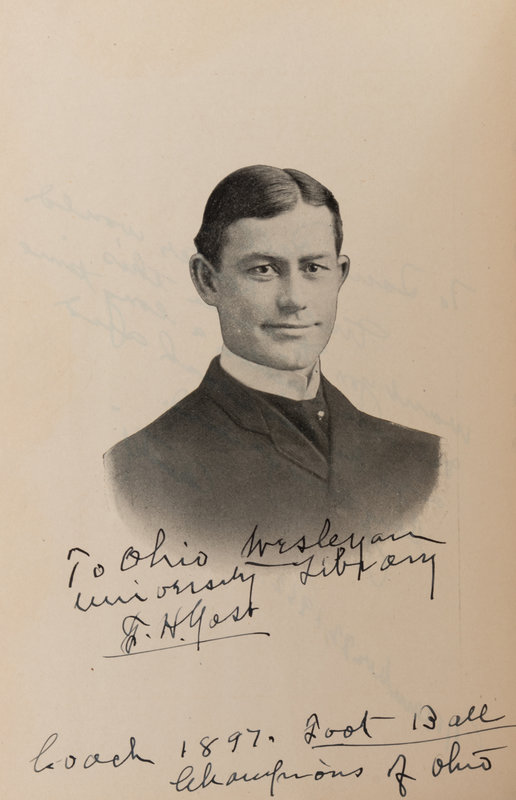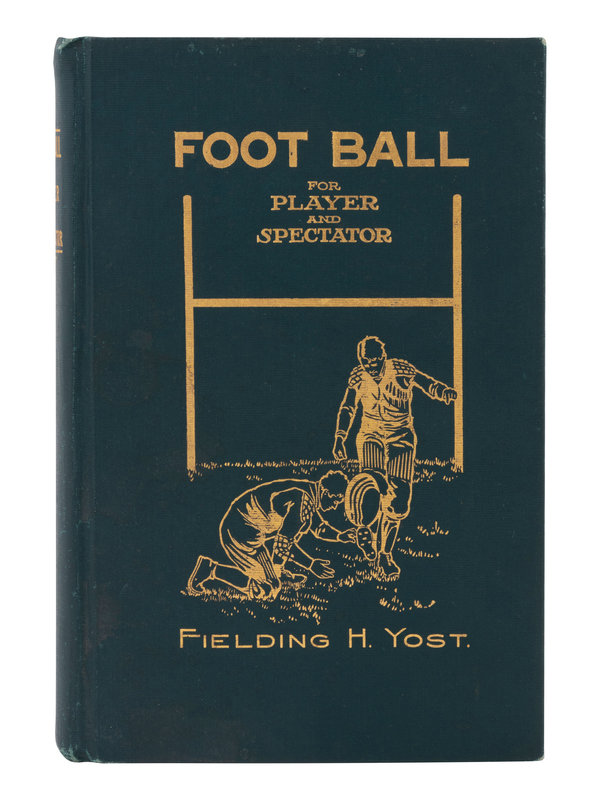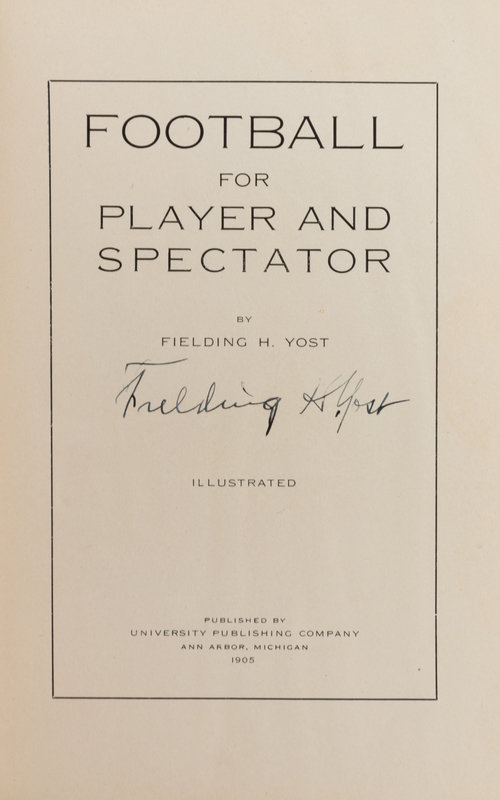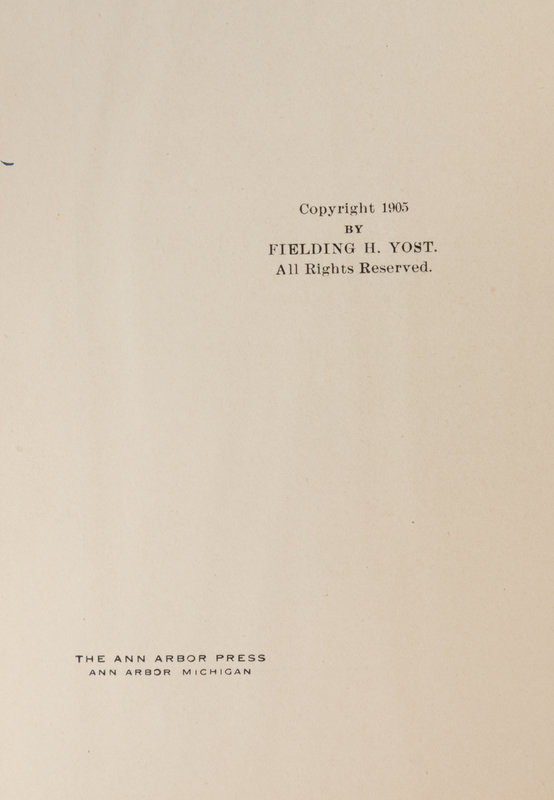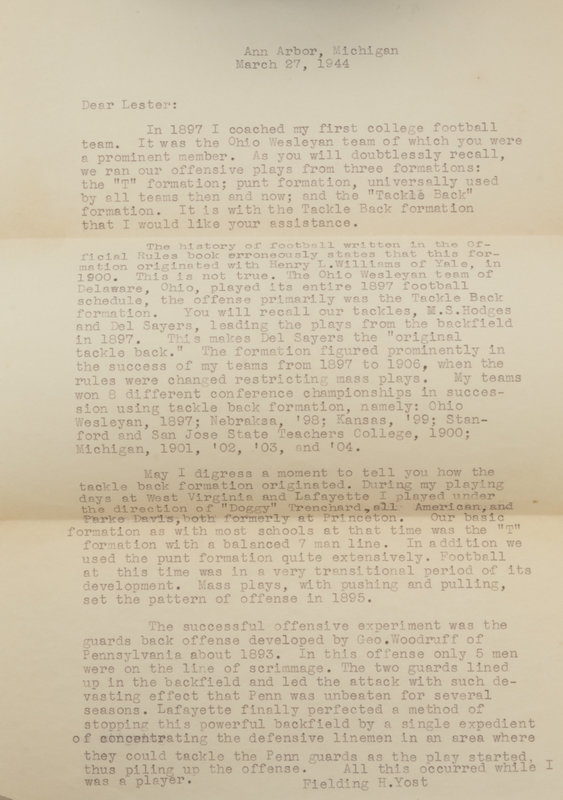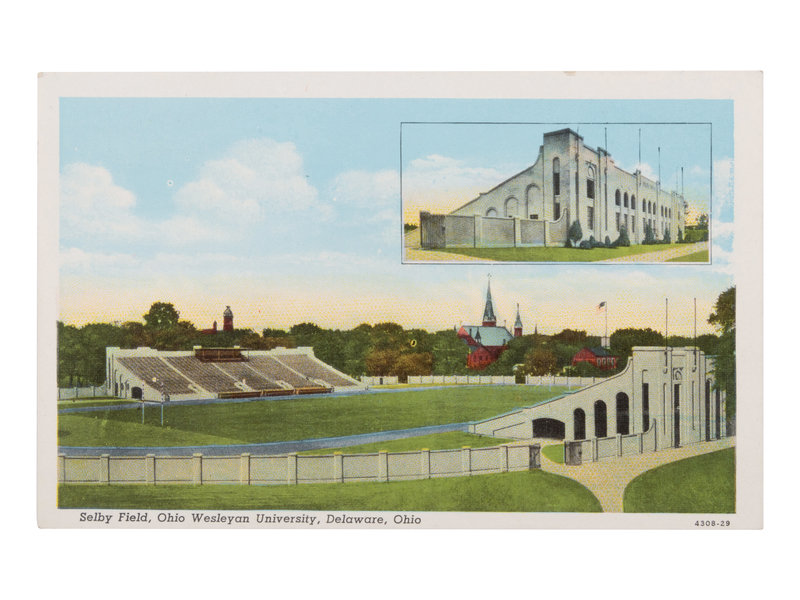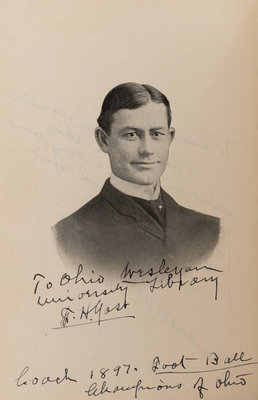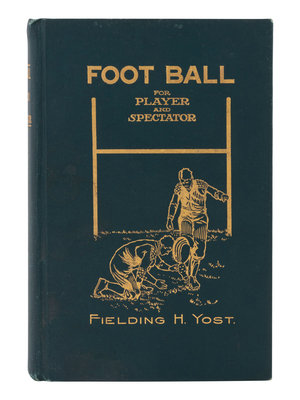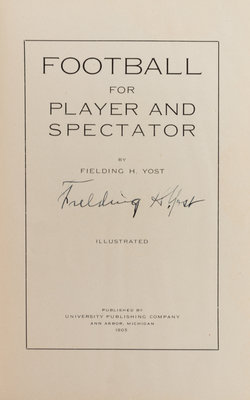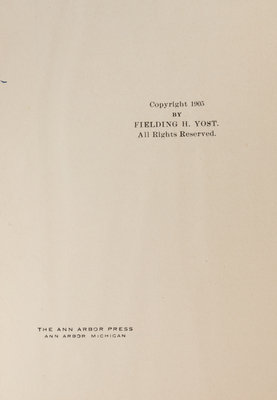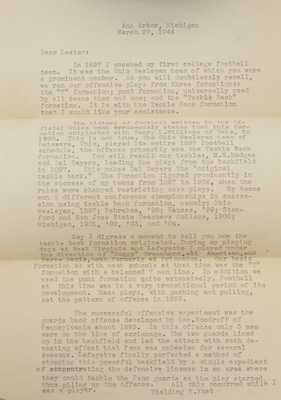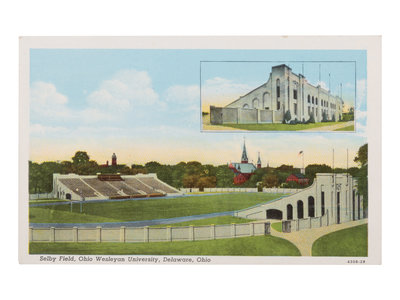Condition Report
Contact Information
Auction Specialist
Lot 160
An Important Group of Fielding H. Yost Items, Including a Twice Signed Football For Player and Spectator and Letter Outlining the Origins of the Tackle Back Formation,
Sale 764 - Sports Memorabilia
Oct 20, 2020
10:00AM CT
Live / Chicago
Own a similar item?
Estimate
$500 -
700
Price Realized
$2,125
Sold prices are inclusive of Buyer’s Premium
Lot Description
An Important Group of Fielding H. Yost Items, Including a Twice Signed Football For Player and Spectator and Letter Outlining the Origins of the Tackle Back Formation,
comprising a book inscribed "To Ohio Wesleyan University Library, F.H. Yost, Coach 1897, Foot-Ball Champions of Ohio" on author's portrait. Yost began his legendary coaching career at Ohio Wesleyan at 26 leading it to a 7-1-1 record. Also signed on title page "Fielding H. Yost" on title page by the founding father of football at the University of Michigan.
Also a letter written by Yost to former player dated:
Ann Arbor, Michigan
March 27, 1944
Dear Lester:
In 1897 I coached my first college football team. It was the Ohio Wesleyan team of which you were a prominent member. As you will doubtlessly recall, we ran our offensive plays from three formations: the "T" formation; punt formation, universally used by all teams then and now; and the "Tackle Back" formation. It is with the Tackle Back Formation that I would like your assistance.
The history of football written in the Official Rules book erroneously states that this formation originated with Henry L. Williams of Yale in 1900. This is not sure. The Ohio Wesleyan team of Delaware, Ohio played its entire 1897 football schedule, the offense primarily was the Tackle Back formation. You will recall our tackles, W.D. Hodges and Del Sayers, leading the plays from the backfield in 1897. This makes Del Sayers the "original tackle back." The formation figured prominently in the success of my teams from 1897 to 1906, when the rules were changed restricting pass plays. My teams won 8 different conference championships in succession using tackle back formation, namely; Ohio Wesleyan, 1897; Nebraska, '98; Kansas, '99; Stanford and San Jose State Teachers College, 1900; Michigan, 1901, '02, '03, and '04.
May I digress a moment to tell you how the tackle back formation originated. During my playing days at West Virigina and Lafayette I played under the direction of "Dogg" Trenchard, all American, and Parke Davis, both formerly at Princeton. Our basic formation as with most schools at that time was the "T" formation with a balanced 7 man line. In addition we used the punt formation quite extensively. Football at this time was in a very transitional period of its development. Mass plays, with pushing and pulling, set the pattern of offense in 1895.
The successful offensive experiment was the guards back offense developed by Geo. Woodruff of Pennsylvania about 1893. In this offense only 5 men were on the line of scrimmage. The guards lined up in the backfield and led the attack with such devastating effect that Penn was unbeaten for several seasons. Lafayette finally perfected a method of stopping this powerful backfield by a single expedient of concentrating the defensive linemen in an area where they could tackle the Penn guards as the play started thus piling up the offense. All this occurred while I was a player.
Fielding H. Yost.
Also a letter written by Yost to former player dated:
Ann Arbor, Michigan
March 27, 1944
Dear Lester:
In 1897 I coached my first college football team. It was the Ohio Wesleyan team of which you were a prominent member. As you will doubtlessly recall, we ran our offensive plays from three formations: the "T" formation; punt formation, universally used by all teams then and now; and the "Tackle Back" formation. It is with the Tackle Back Formation that I would like your assistance.
The history of football written in the Official Rules book erroneously states that this formation originated with Henry L. Williams of Yale in 1900. This is not sure. The Ohio Wesleyan team of Delaware, Ohio played its entire 1897 football schedule, the offense primarily was the Tackle Back formation. You will recall our tackles, W.D. Hodges and Del Sayers, leading the plays from the backfield in 1897. This makes Del Sayers the "original tackle back." The formation figured prominently in the success of my teams from 1897 to 1906, when the rules were changed restricting pass plays. My teams won 8 different conference championships in succession using tackle back formation, namely; Ohio Wesleyan, 1897; Nebraska, '98; Kansas, '99; Stanford and San Jose State Teachers College, 1900; Michigan, 1901, '02, '03, and '04.
May I digress a moment to tell you how the tackle back formation originated. During my playing days at West Virigina and Lafayette I played under the direction of "Dogg" Trenchard, all American, and Parke Davis, both formerly at Princeton. Our basic formation as with most schools at that time was the "T" formation with a balanced 7 man line. In addition we used the punt formation quite extensively. Football at this time was in a very transitional period of its development. Mass plays, with pushing and pulling, set the pattern of offense in 1895.
The successful offensive experiment was the guards back offense developed by Geo. Woodruff of Pennsylvania about 1893. In this offense only 5 men were on the line of scrimmage. The guards lined up in the backfield and led the attack with such devastating effect that Penn was unbeaten for several seasons. Lafayette finally perfected a method of stopping this powerful backfield by a single expedient of concentrating the defensive linemen in an area where they could tackle the Penn guards as the play started thus piling up the offense. All this occurred while I was a player.
Fielding H. Yost.
